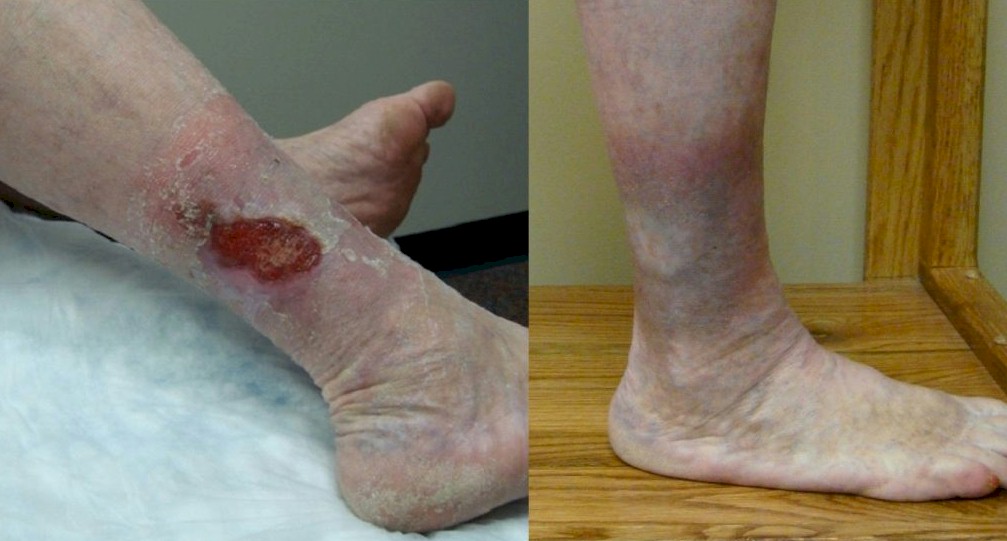Leg ulcers, also known as venous ulcers, are large open sores that frequently appear around the lower leg and ankle.
These sores can develop from even the smallest cut or nick in the skin and grow quite large rather quickly. Leg ulcers can be very difficult to treat and tend to have a high recurrence rate. For this reason, it is helpful to know if you are at higher risk for leg ulcers and what steps you can take to lower your risk before the sore develops.
Recognizing a Leg Ulceration
Leg ulcers can be recognized by the following characteristics:
- Usually appear around the lower leg, particular the ankle area
- Tend to be asymmetrical, with clearly defined edges
- Skin surrounding the sore may look inflamed, hard or scaly
- Sore is somewhat sunken and may emit white or yellow pus
- The sore may result in pain, especially while standing
These symptoms should certainly prompt you to seek treatment as soon as possible. However, pursuing treatment at the first sign of significant skin changes, before the sore actually appears, will offer a better prognosis overall. Get an assessment when your skin starts to look discolored or becomes hard to the touch, especially if you have other symptoms like visible varicose veins or pain in your lower legs.
Causes
Leg ulcers are often the result of an underlying vein disorder like venous insufficiency. This problem occurs when small valves inside the vessels of the lower legs stop working properly, allowing blood to pool inside the vessel rather than return to the heart. The pooling leads to weakening of the vessel and often the appearance of visible varicose veins. It can also affect surrounding skin and tissue, causing significant skin changes and the formation of leg ulcers if left unchecked.
Primary Risk Factors
There are a number of factors that can increase your likelihood of developing leg ulcers:
- Age – venous ulcers tend to occur in individuals over the age of 50
- Inactivity – lack of movement affects blood circulation, which in turn can impact your risk for leg ulcers
- Obesity – added pounds place more strain on the veins in the lower legs, which can lead to vein disorders and the formation of ulcers
- History of Blood Clots – even after blood clots resolve, the damage they did to the vessel can lead to additional issues like leg ulcers
- Varicose Veins – varicose veins are caused by blood refluxing into the lower leg veins, which can in turn increase your risk for leg ulcers
Prevention Tips
If you have any of the risk factors above, it is a good idea to talk to a vein specialist about ways you can lower your risk for these stubborn sores. A vein specialist can evaluate the blood flow in your lower legs to determine whether you have circulation problems that should be addressed before they become a bigger problem. These physicians can also recommend treatment for vein disorders that will significantly lower your risk for leg ulcers in the future.
Diagnosing and Treating Venous Ulcers
Once a leg ulcer has formed, treatment generally involves a combination of compression, special dressings and often antibiotics. It is also important to treat the underlying vein condition that led to the formation of the sore, to clear up the current ulceration completely and prevent future sores from forming.
Dr. Draughn at Vein Specialists of the Carolinas has extensive experience working both with leg ulcers and the venous disorders that tend to cause them. To learn more about this condition or the treatment options available, contact Vein Specialists of the Carolinas at 704-861-2072 or 704-544-5245.

